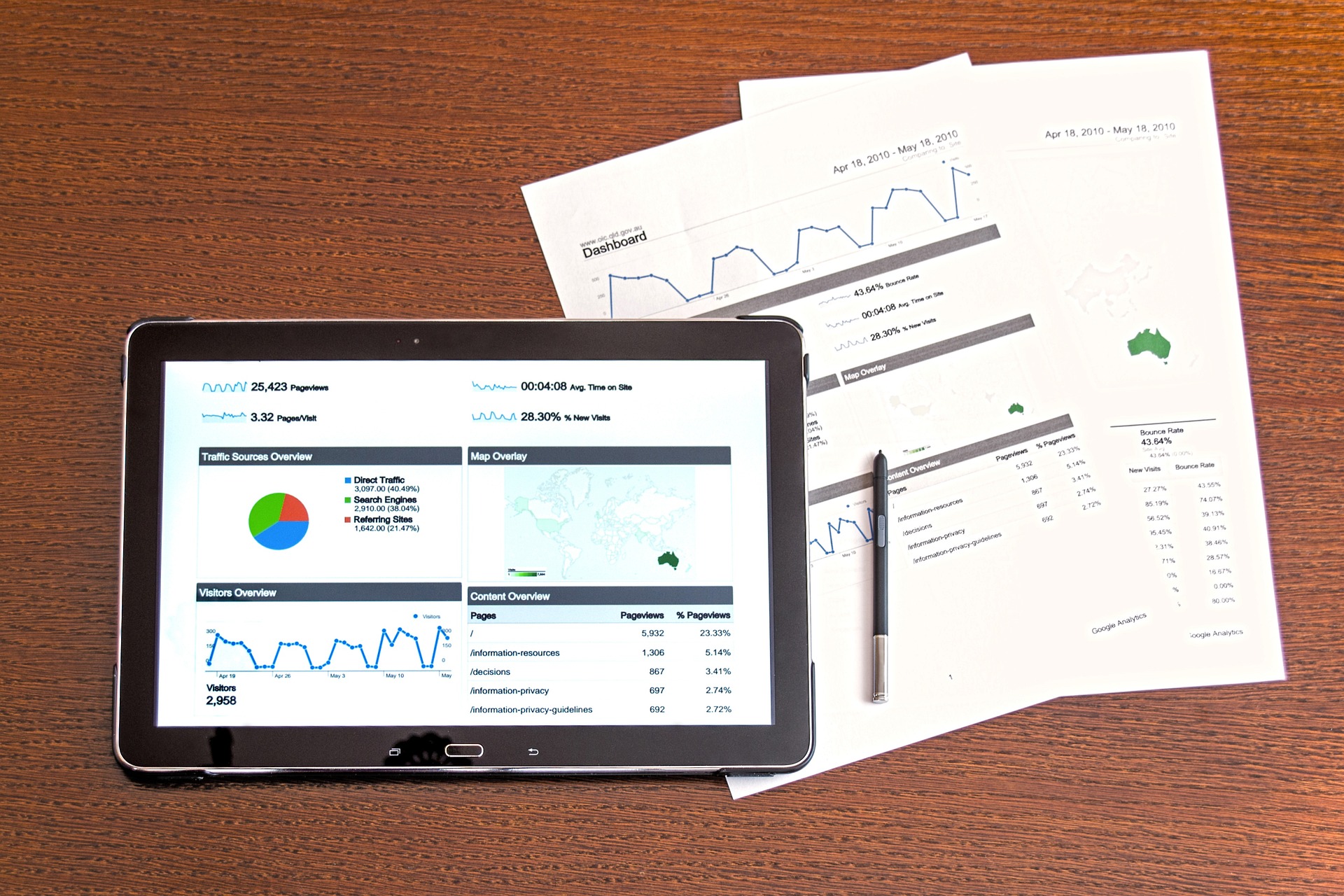How to Manage Data in 2023: Top Trends Every Business Must Know
Artificial Intelligence | May 24, 2023
Data management is an important tool for companies to stay on top of their game, in today’s digital age, businesses are accumulating vast amounts of data at an unprecedented rate. However, the challenge is not just about collecting input.
It is about effectively managing, analyzing, and utilizing that input to drive success. This has led to the rise of various data management trends and solutions such as automation, cloud storage, and data warehousing as a service, to name but a few.
These trends have tangible and practical applications across diverse industries, from supply chain management to customer behavior analytics. In this article, we’ll take a closer look at what they are exactly.
Data Management Explained
Data management is the process of collecting, storing, organizing, and maintaining information to ensure that it is secure, accurate, and up-to-date. A robust data management strategy has many benefits, such as increased efficiency, improved customer experience, better decision-making, and cost reduction.
For example, a clothing retailer can use data management to identify which product lines are selling well, which ones are not, and which ones are trending in the market. This insight can help retailers tailor their inventory to meet customer needs and preferences.
This, in turn, leads to higher sales and customer satisfaction. Or, businesses can use the information to optimize their supply chain, reduce waste, and streamline their operations
Through analyzing the collected input, they can identify inefficiencies in their operations, such as excess inventory, and take corrective action to reduce costs.

Types of Data
Data comes in many different shapes and sizes — not just numbers or text-based information anymore. Here are four major types of data:
- Structured
- Semi-structured
- Unstructured
- Derived
Structured data is well-defined and organized systematically. It is organized into a predefined schema and is easily searchable and analyzable. For example, customer name, address, phone number, and purchase history is structured data. It can be stored in traditional relational databases, and businesses can use tools such as SQL to extract and analyze it.
Semi-structured data typically includes text documents that aren’t stored in a uniform format. It has some predefined format but is also flexible to accommodate changes. Emails, social media posts, and XML files are all examples of it. It is often stored in NoSQL databases or data lakes, where its flexible structure can be accommodated.
Unstructured data is any type of information that isn’t organized or easily searchable. Examples include customer reviews, images, and videos. It is typically stored in data lakes or content management systems, and businesses use text mining, natural language processing, and machine learning techniques to analyze it.
And finally, derived data is information based on analyzing multiple sources to create new insights for decision-making. For example, customer segmentation can be used to better understand customer behavior and preferences. Derived data is usually structured or semi-structured, and businesses use analytics tools such as mining and machine learning to extract insights from it.
How to Manage Data in 2023: 5 Top Trends
Automation and Artificial Intelligence:
One of the biggest trends in data management is automation and artificial intelligence (AI). AI can help uncover valuable insights that would otherwise remain hidden. Automation helps to reduce human error, which can assist organizations in avoiding costly mistakes.
One example of how automation and AI can help businesses manage data is customer service. Chatbots and virtual assistants are being used to automate customer interactions and collect information about customer preferences, complaints, and feedback.
Businesses can analyze this information to identify patterns and trends, such as common customer complaints or frequently asked questions.
They can then use it to improve their products, services, and customer experiences. By automating customer interactions, in turn, businesses can save time and resources as well as provide a faster service.
Cybersecurity
As the amount of stored data increases, so does the need for robust cybersecurity measures. Businesses must ensure their information is secure from unauthorized access and malicious attacks, this can include setting up firewalls, turning to encryption, and utilizing access control systems.
For example, if a business stores credit card numbers or personal information, implementing strong cybersecurity measures can prevent this information from being accessed by hackers or cyber criminals by doing so, businesses can maintain customer trust and avoid costly data breaches that can result in financial losses, reputational damage, and legal liabilities.

Cloud Storage Solutions
Cloud storage solutions are becoming increasingly popular as they allow organizations to store large amounts of information without investing in expensive hardware. These solutions are typically much more reliable and secure than traditional storage systems.
Companies should also consider using cloud-based analytics tools, which can help them gain insights from their intelligence faster and at a lower cost.
To illustrate the point, imagine a marketing agency that creates and manages digital content for various clients. The agency has a team of designers, writers, and project managers who collaborate on projects. With cloud storage solutions, the team can store all their digital assets in a centralized location accessible from anywhere with an Internet connection.
They can use cloud-based collaboration tools such as Google Docs or Dropbox to share files and work on them in real-time. This allows the team to collaborate seamlessly, even if they’re working remotely or in different locations.
Blockchain and Distributed Ledger Technology
Blockchain and distributed ledger technology are technologies that allow organizations to record transactions in a secure distributed network.
They thus provide greater visibility into how information is being used and shared. These solutions offer enhanced security measures that help protect against malicious attacks.
One example of how blockchain and DLT can help businesses with handling the collected input is in the supply chain industry with their help, businesses can create a tamper-proof record of every transaction that occurs throughout the supply chain, from the sourcing of raw materials to the delivery of the final product.
This record can be shared with all relevant parties in real-time, ensuring transparency and accountability. Besides, smart contracts can be programmed into the blockchain to automate certain processes, such as triggering payments when certain conditions are met. This can streamline supply chain management and reduce the risk of errors or fraud.

Big Data Analytics
Last but not least, big data analytics is another tool for businesses looking to gain valuable insights.
This type of analysis allows companies to identify patterns and correlations in their intelligence that could lead to new opportunities or improvements in existing processes. By leveraging these tools, organizations can make better decisions faster and more confidently.
One example of how big data analytics can be used in data management is the retail industry. Retailers can use it to analyze customer purchase history, browsing behavior, and demographics to gain insights into customer preferences and trends.
For instance, a retailer can use analytics to identify which products are selling well, which ones are not, and which ones are trending in the market.
By understanding customer preferences and behavior patterns, businesses can optimize their marketing strategies and tailor their product offerings accordingly.
Another example is inventory management. Retailers can use data analytics to forecast demand and optimize their inventory levels to prevent stock outs or overstocks. This can help businesses save costs associated with overstocking and improve customer satisfaction by ensuring that the products they want are always available. By analyzing the information coming from point-of-sale systems, businesses can make informed decisions on pricing, promotions, and stock levels.
How to Secure Big Data
Security is a critical factor when it comes to effective data management without the proper measures in place, businesses could suffer from breaches or cyber-attacks, which can lead to costly losses and reputational damage.
Here are some of the most critical steps toward ensuring maximum security:
- Encryption: Encrypting data before transferring it to external systems prevents unauthorized access.
- Risk Management: Identifying potential risks and taking preventive measures, such as conducting regular audits or testing applications for vulnerabilities, helps protect sensitive information from falling into the wrong hands.
- Access Control: Establishing procedures that control user access to information allows to minimize the risks of breaches.
- Intrusion Detection: A detection software monitors your system’s activities, looks for malicious behavior, and alerts you if any are detected.
- Backups: Taking regular backups provides extra insurance against minor issues or large-scale damage caused by disasters.
- Privacy Policies: A comprehensive privacy policy creates trust between customers and businesses. It informs customers on how their personal information is being handled and what security measures have been taken to protect it from misuse or unauthorized access.
Bottom Line
Businesses must stay on top of data management trends to remain competitive and capitalize on the benefits of accurate, up-to-date data.
Investing in cloud computing, artificial intelligence, and machine learning technologies are just a few ways businesses can manage information more effectively in 2023.





